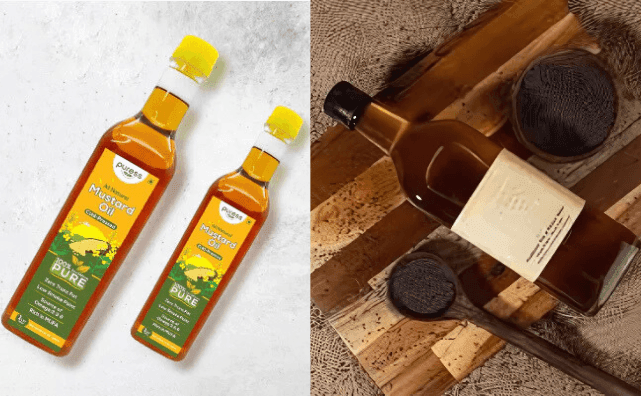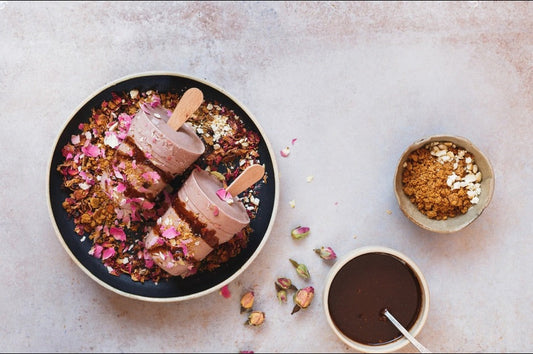
Understanding the Difference Between Kachi Ghani and Cold-Pressed Oils
Oils are an essential part of every kitchen, offering flavor and nutrition to our meals. Among the myriad oil types available, two terms often catch our attention: Kachi Ghani and Cold-Pressed oils. While both methods are traditional and emphasize natural processing, there are notable differences that set them apart. Let’s delve deeper into these two oil extraction methods to understand their distinctions and benefits.
What is Kachi Ghani Oil?
The term “Kachi Ghani” translates to “raw press” in Hindi. This traditional method involves the extraction of oil from seeds like mustard, sesame, or groundnuts using a wooden or stone mill.
Key Features of Kachi Ghani Oil:
- Low-Temperature Processing: The oil is extracted at a low temperature to retain its natural flavor, aroma, and nutritional properties.
- Rich in Nutrients: Since it’s minimally processed, Kachi Ghani oil retains antioxidants, essential fatty acids, and vitamins.
- Strong Flavor and Aroma: Particularly in mustard oil, the pungency is preserved, making it ideal for pickling and traditional recipes.
- Regional Popularity: This method is widely used in India and is deeply rooted in Indian culinary traditions.
What is Cold-Pressed Oil?
Cold-pressed oil, as the name suggests, involves extracting oil by pressing seeds or nuts without applying heat.
Key Features of Cold-Pressed Oil:
- No Heat Application: This ensures the oil retains its nutritional integrity, such as vitamins, enzymes, and omega fatty acids.
- Versatile Use: Cold-pressed oils are commonly used for cooking, dressing salads, and even skincare due to their purity.
- Mild Flavor: Compared to Kachi Ghani, these oils have a subtler flavor, making them suitable for contemporary recipes.
- Global Popularity: Cold-pressing is a widely accepted method across the globe, especially in Western countries.
Differences Between Kachi Ghani and Cold-Pressed Oils
|
Aspect |
Kachi Ghani Oil |
Cold-Pressed Oil |
|
Processing Method |
Traditional wooden or stone mills |
Mechanical pressing without heat |
|
Heat Application |
Minimal heat generated during pressing |
No heat applied |
|
Flavor |
Strong and distinct |
Mild and neutral |
|
Common Uses |
Pickling, Indian curries |
Salads, light cooking, skincare |
|
Nutritional Value |
High (retains natural compounds) |
High (preserves nutrients) |
|
Seed Types |
Mustard, sesame, groundnuts |
Olives, coconut, sunflower, almonds |
Choosing the Right Oil for Your Needs
Both Kachi Ghani and Cold-Pressed oils are excellent choices, depending on your requirements:
- Opt for Kachi Ghani oil if you’re looking for robust flavors and oils steeped in traditional culinary practices. Mustard Kachi Ghani oil, for example, is a staple in Indian households for its pungency and health benefits.
- Choose Cold-Pressed oil for versatility and a milder flavor profile. It’s an ideal choice for health-conscious individuals who prefer salads, light sautéing, or skincare applications.
Health Benefits of Both Oils
- Rich in Antioxidants: Both oils are known to fight free radicals, promoting better health.
- Heart-Healthy Fats: They provide essential fatty acids that support cardiovascular health.
- Boosts Immunity: Nutrient-dense oils improve the body’s defense mechanisms.
Understanding the differences between Kachi Ghani and Cold-Pressed oils helps you make informed choices based on your culinary and health needs. Both options provide a healthier alternative to refined oils, ensuring you enjoy wholesome nutrition with every meal. Whether you lean towards tradition with Kachi Ghani or prefer the subtle sophistication of Cold-Pressed oils, integrating these oils into your diet is a step towards healthier living.
Continue reading
View all-

The Twin Temptation: Bakers Frappe Powder for Your Cafe-at-Home Moments
Are you tired of spending a fortune at coffee shops to get that perfect frappe? What if you could recreate that creamy, smooth, and delicious experience right in your own...
The Twin Temptation: Bakers Frappe Powder for Your Cafe-at-Home Moments
Are you tired of spending a fortune at coffee shops to get that perfect frappe? What if you could recreate that creamy, smooth, and delicious experience right in your own...
-

Spice Up Your Plate: The Golden Touch of Puress Cold Pressed Mustard Oil!
Puress Cold Pressed Mustard Oil can transform a dish with its unique flavor profile. Try it now!
Spice Up Your Plate: The Golden Touch of Puress Cold Pressed Mustard Oil!
Puress Cold Pressed Mustard Oil can transform a dish with its unique flavor profile. Try it now!
-






